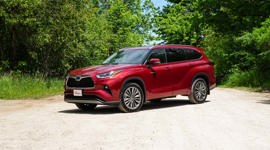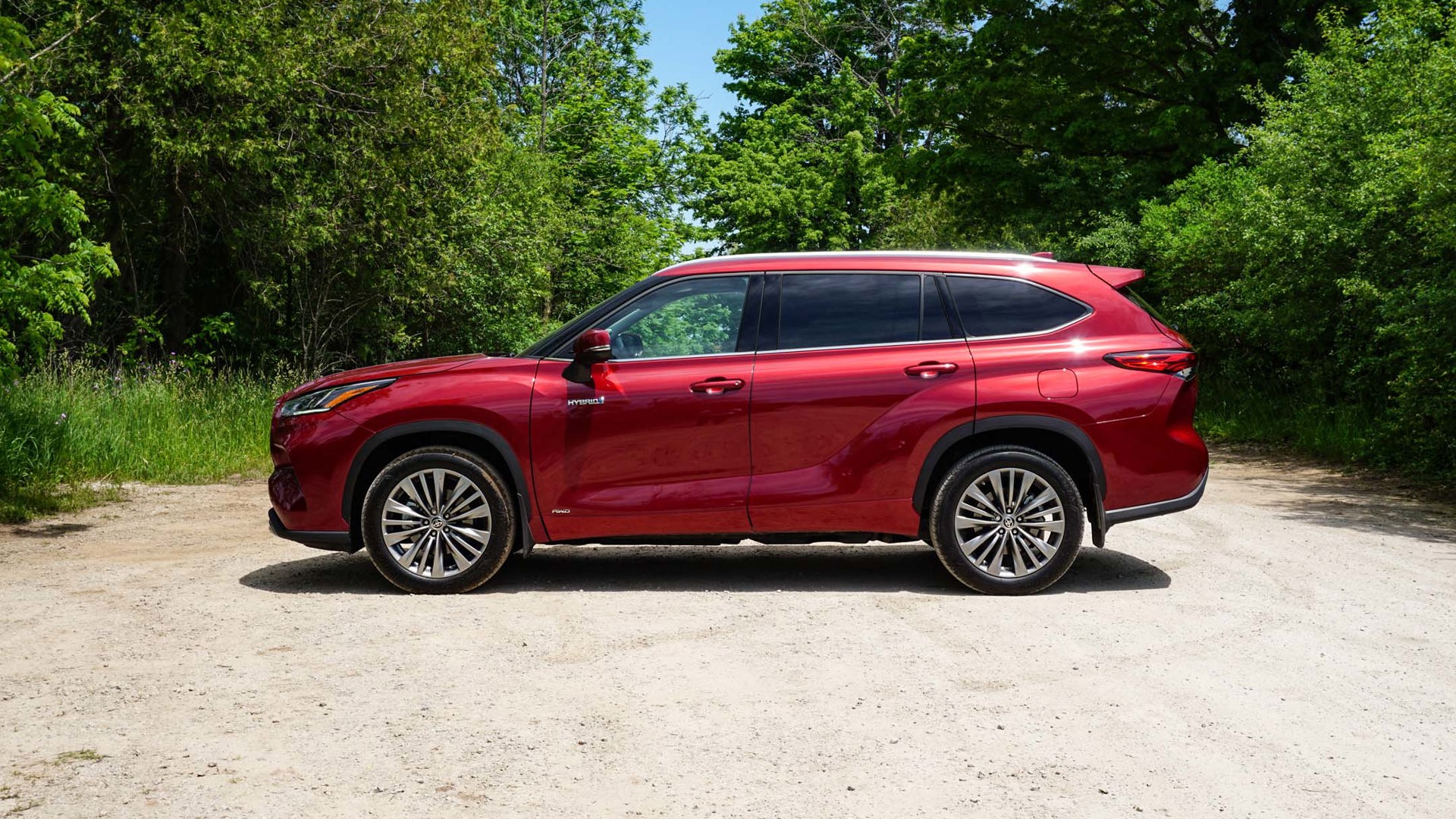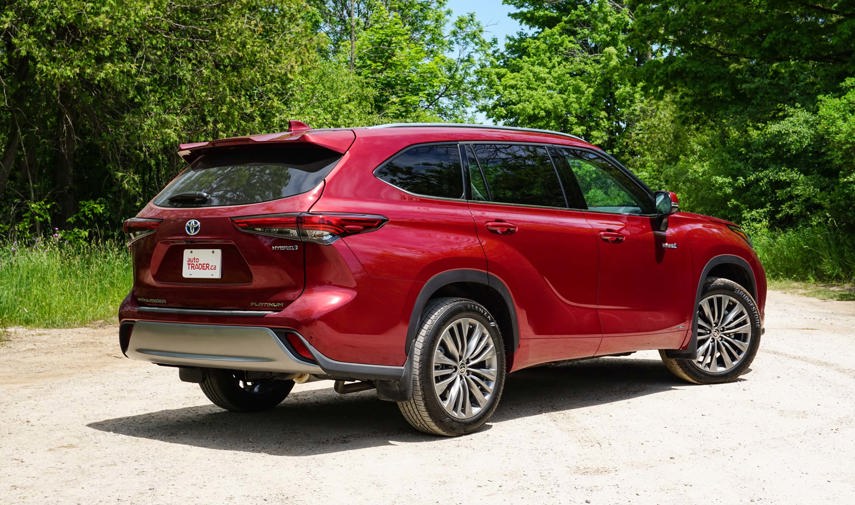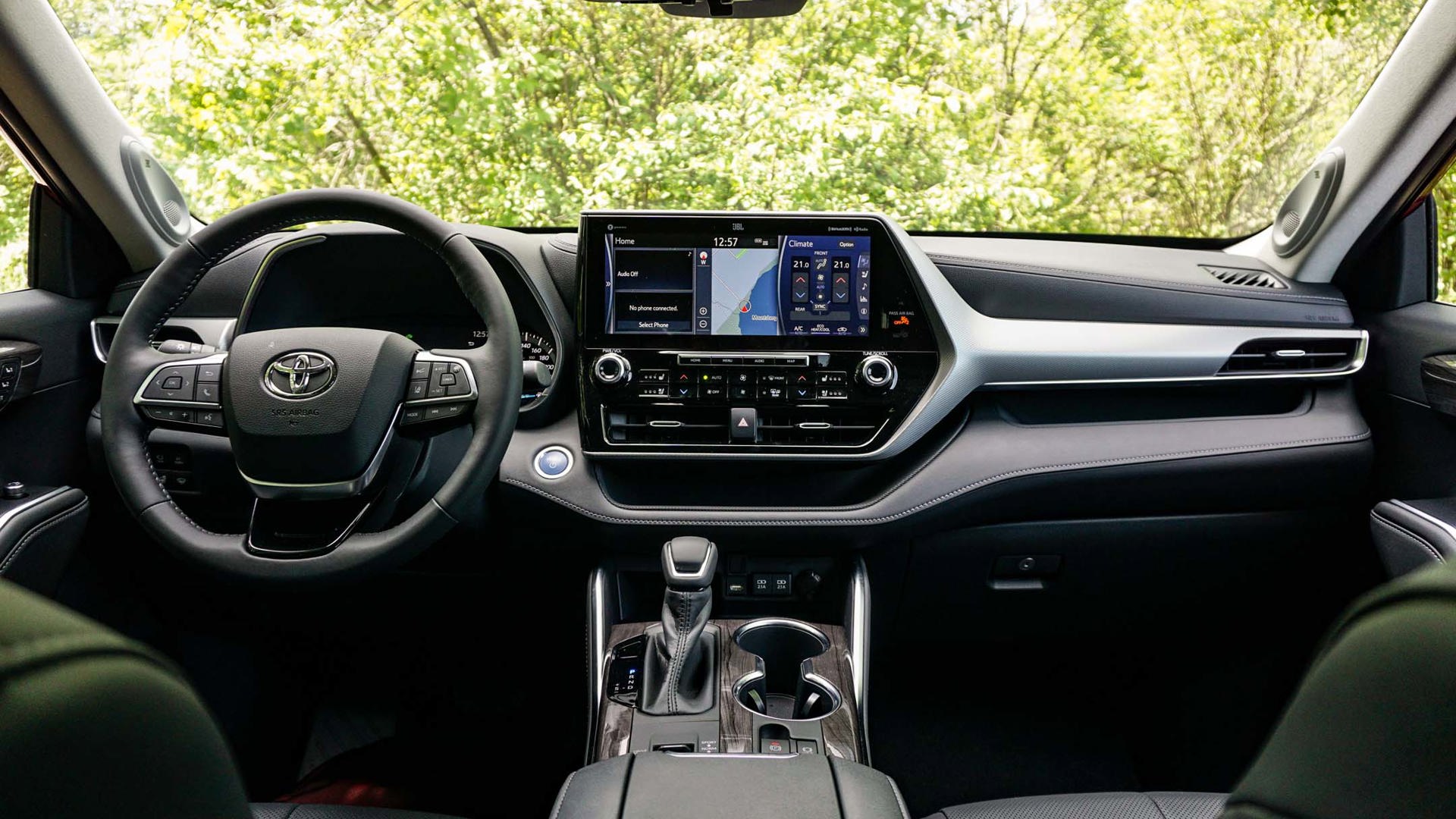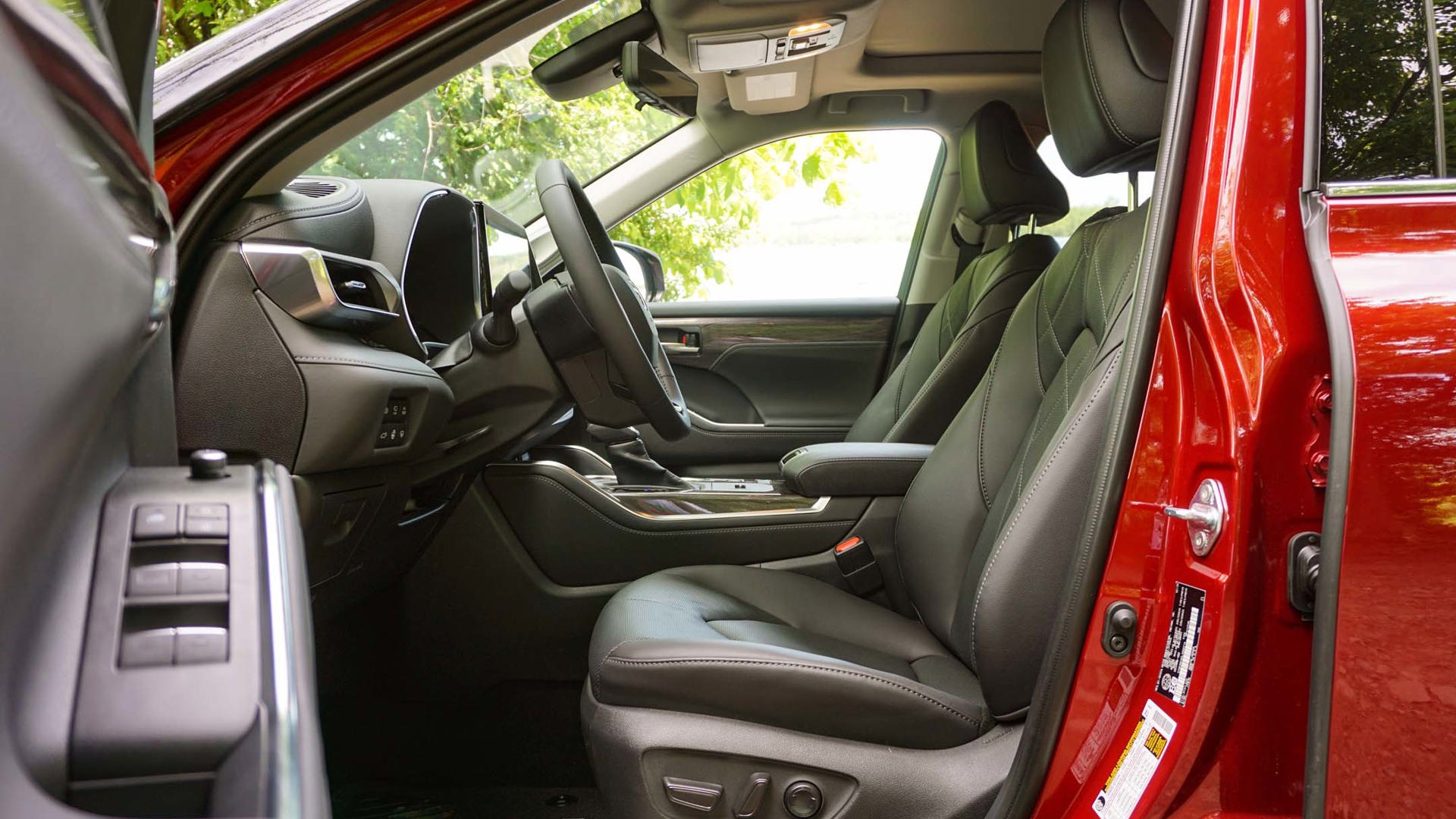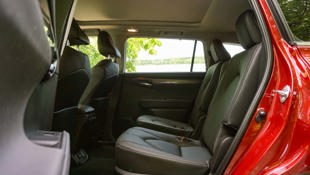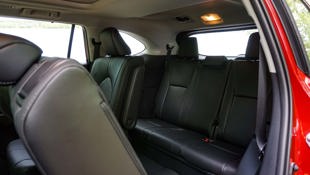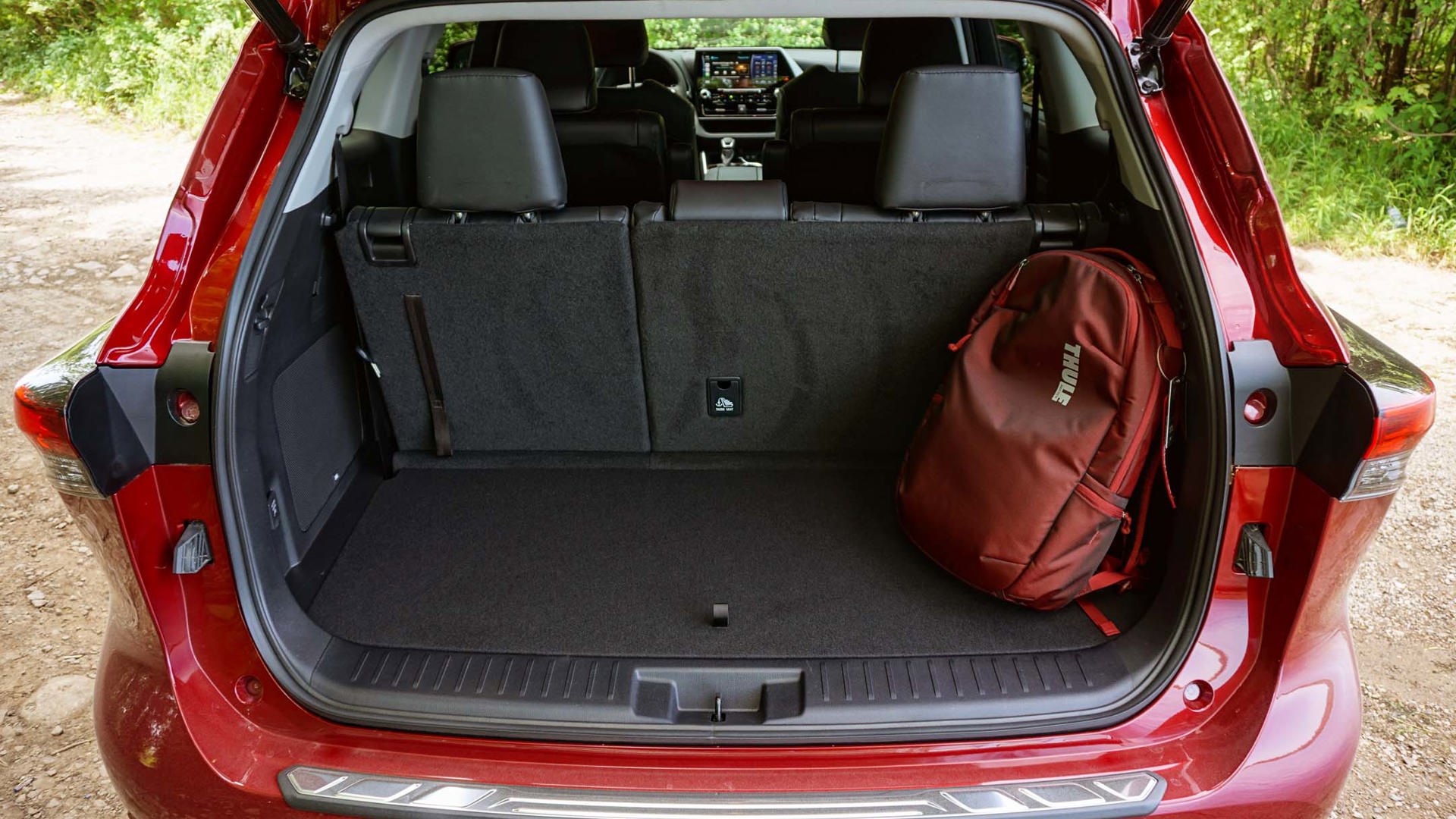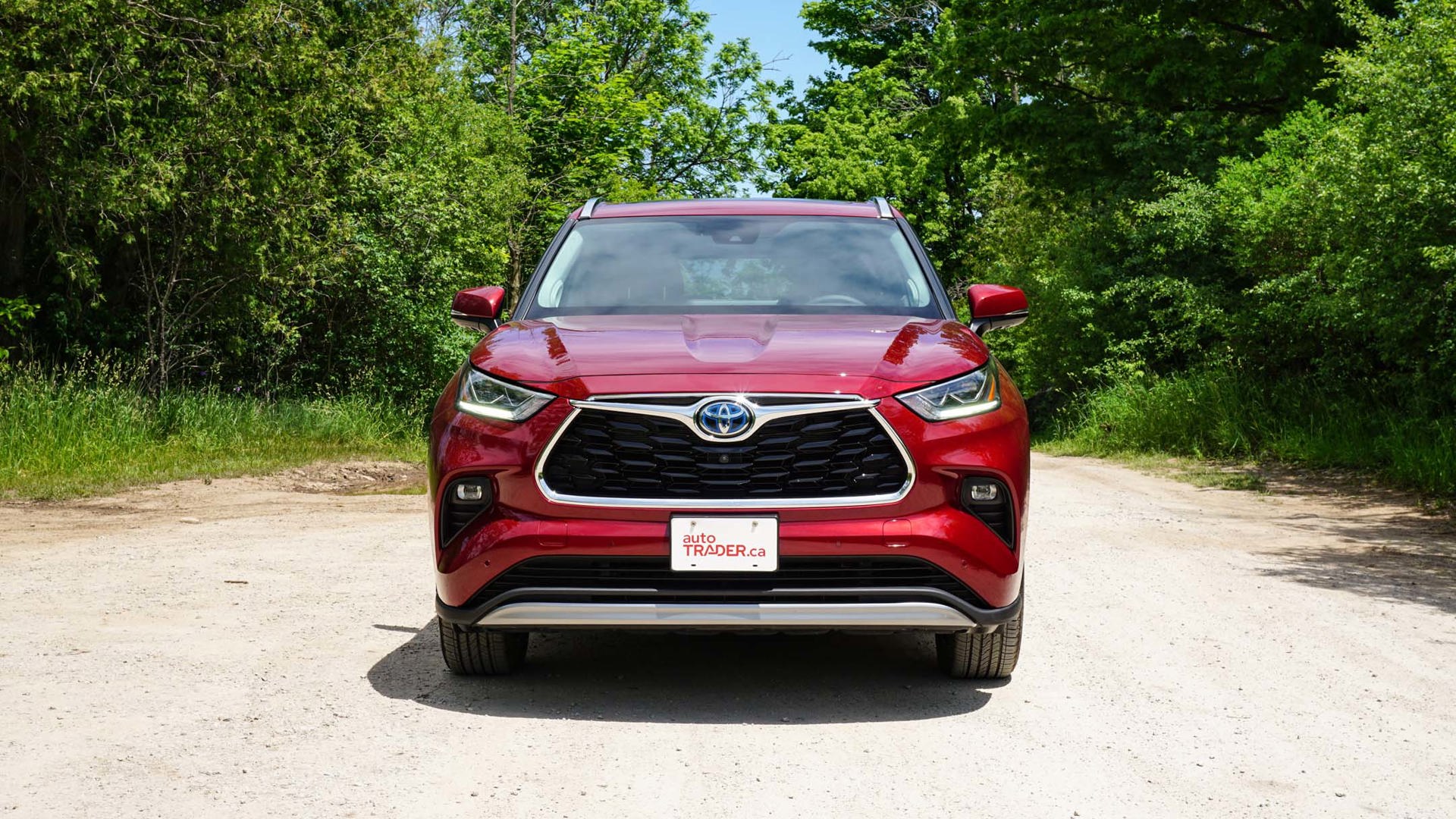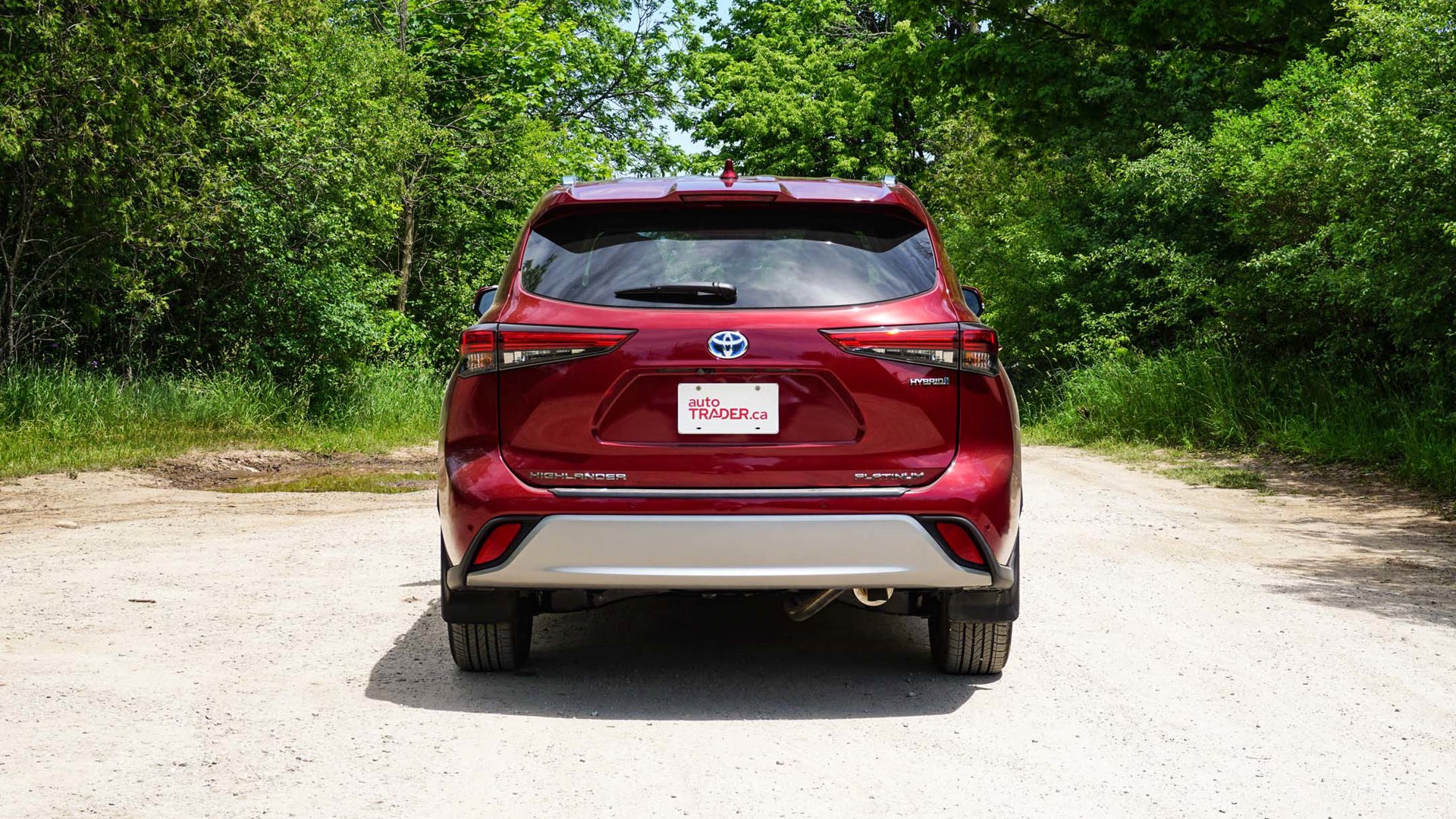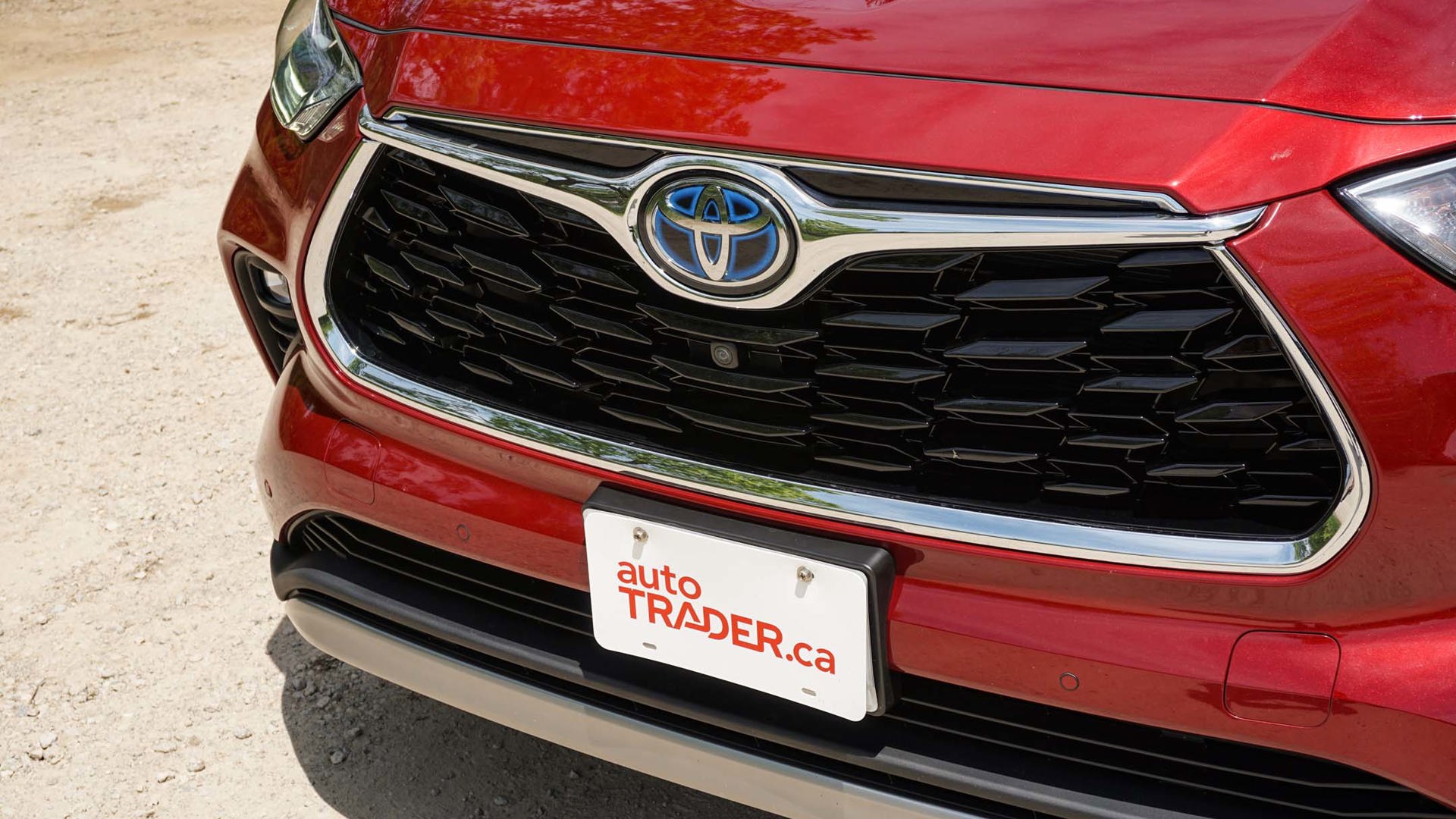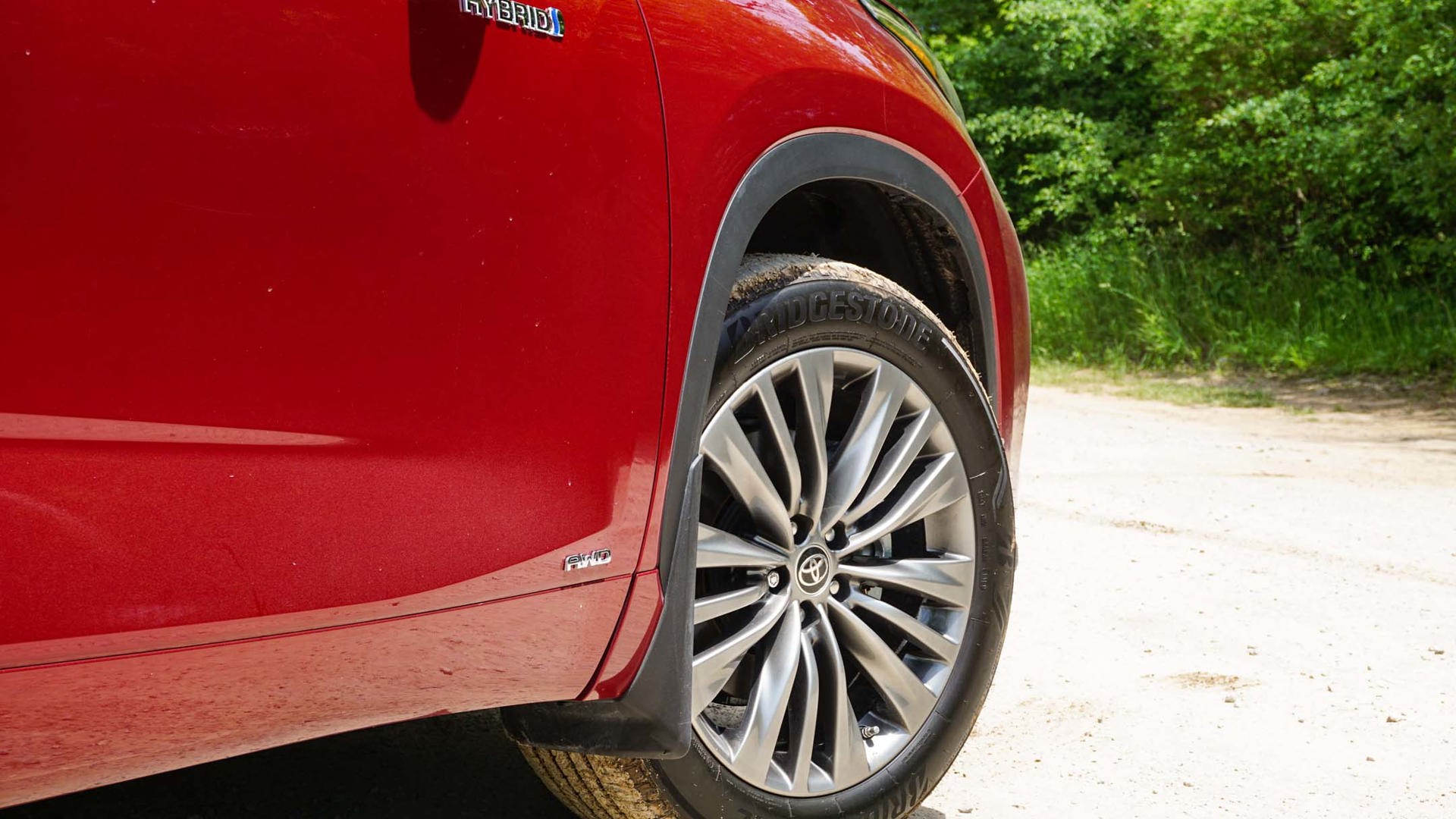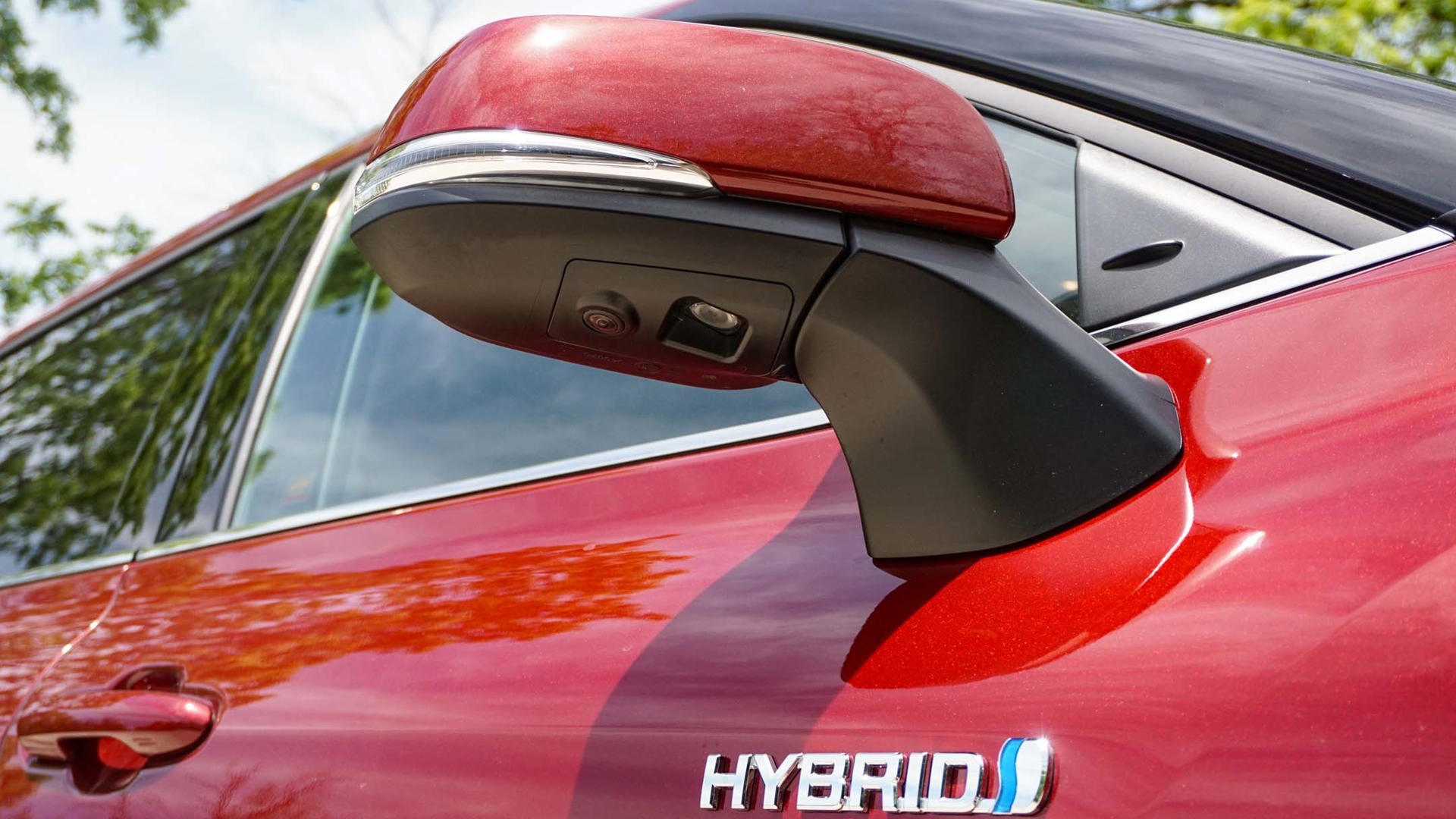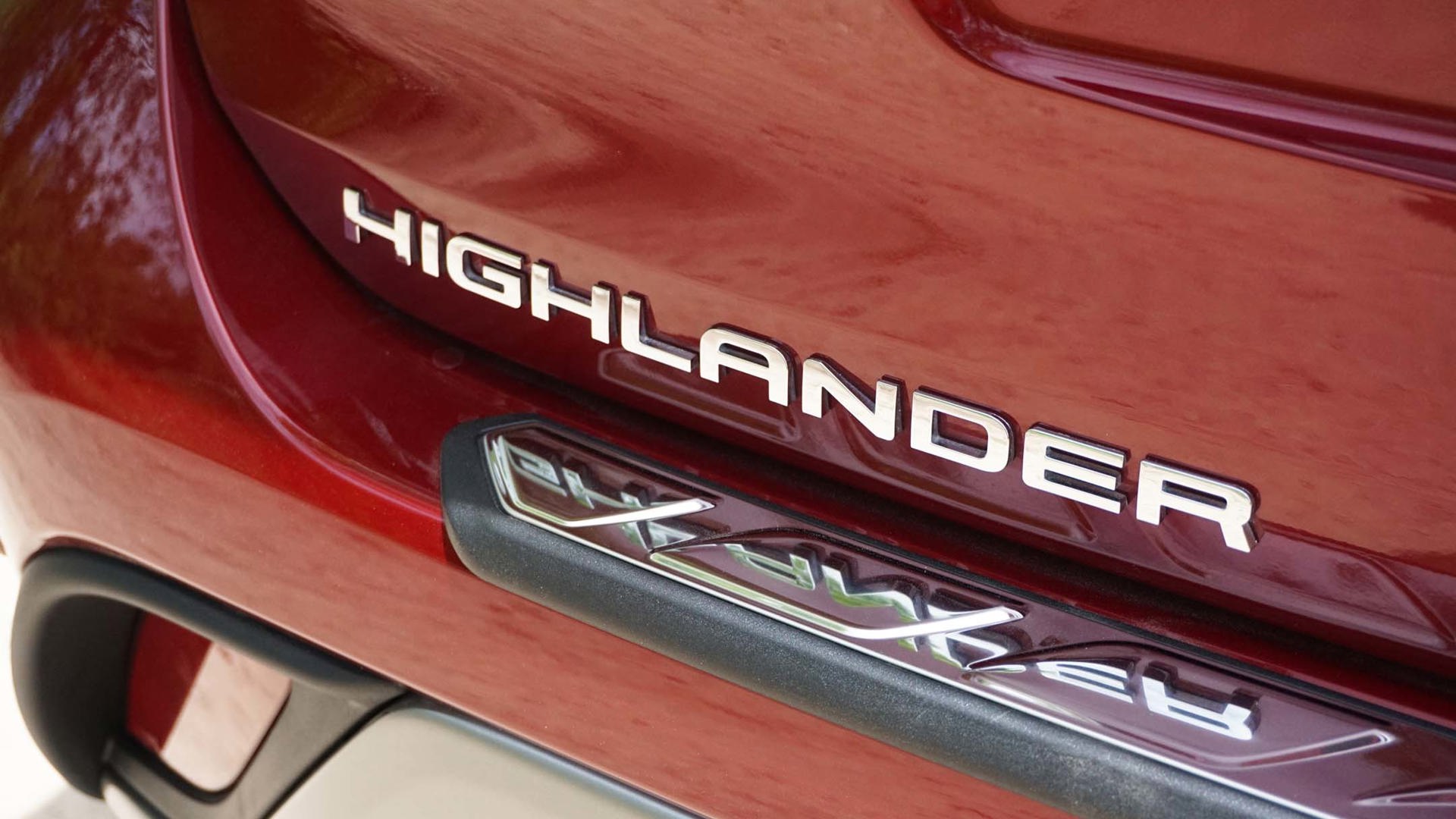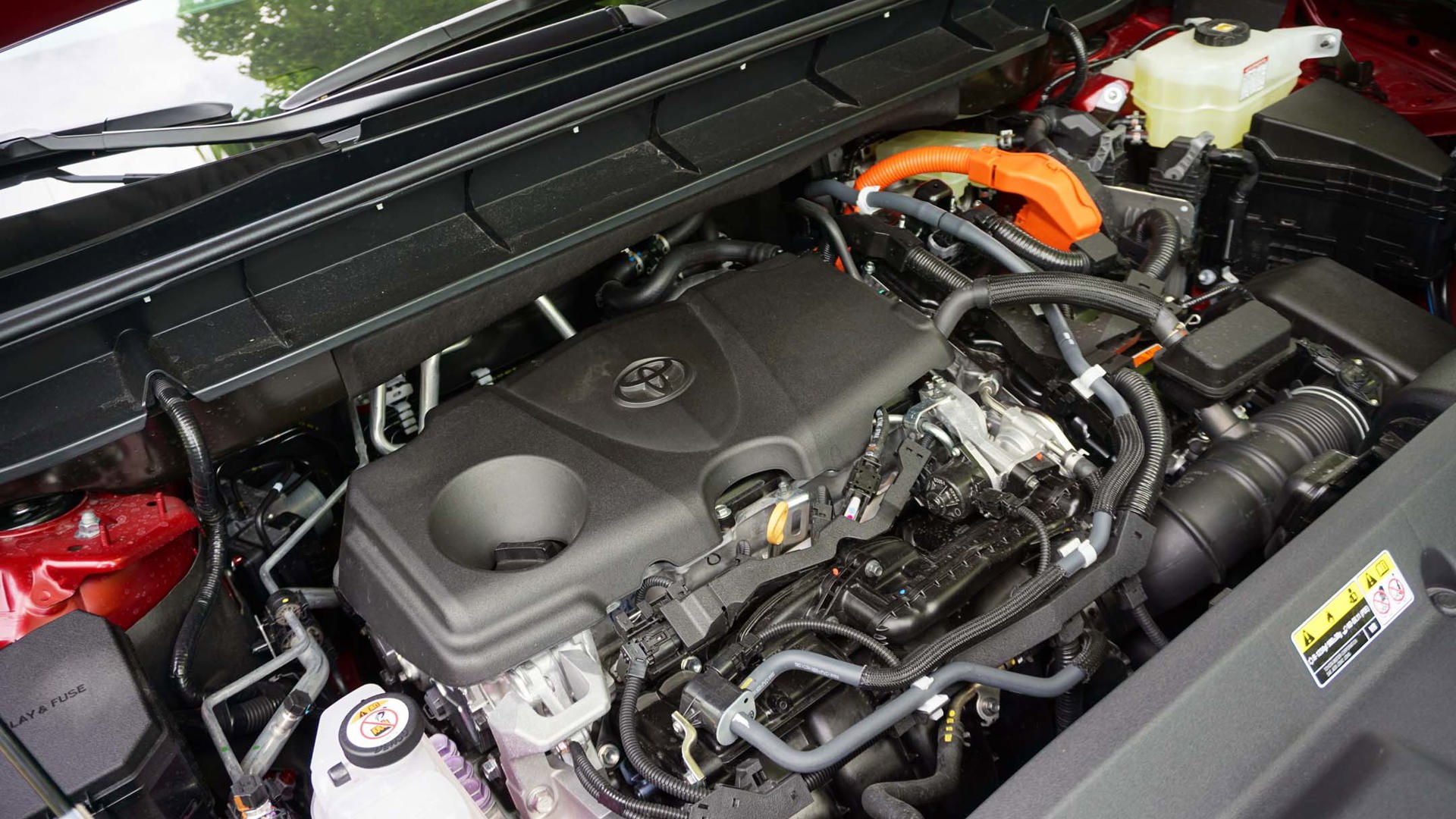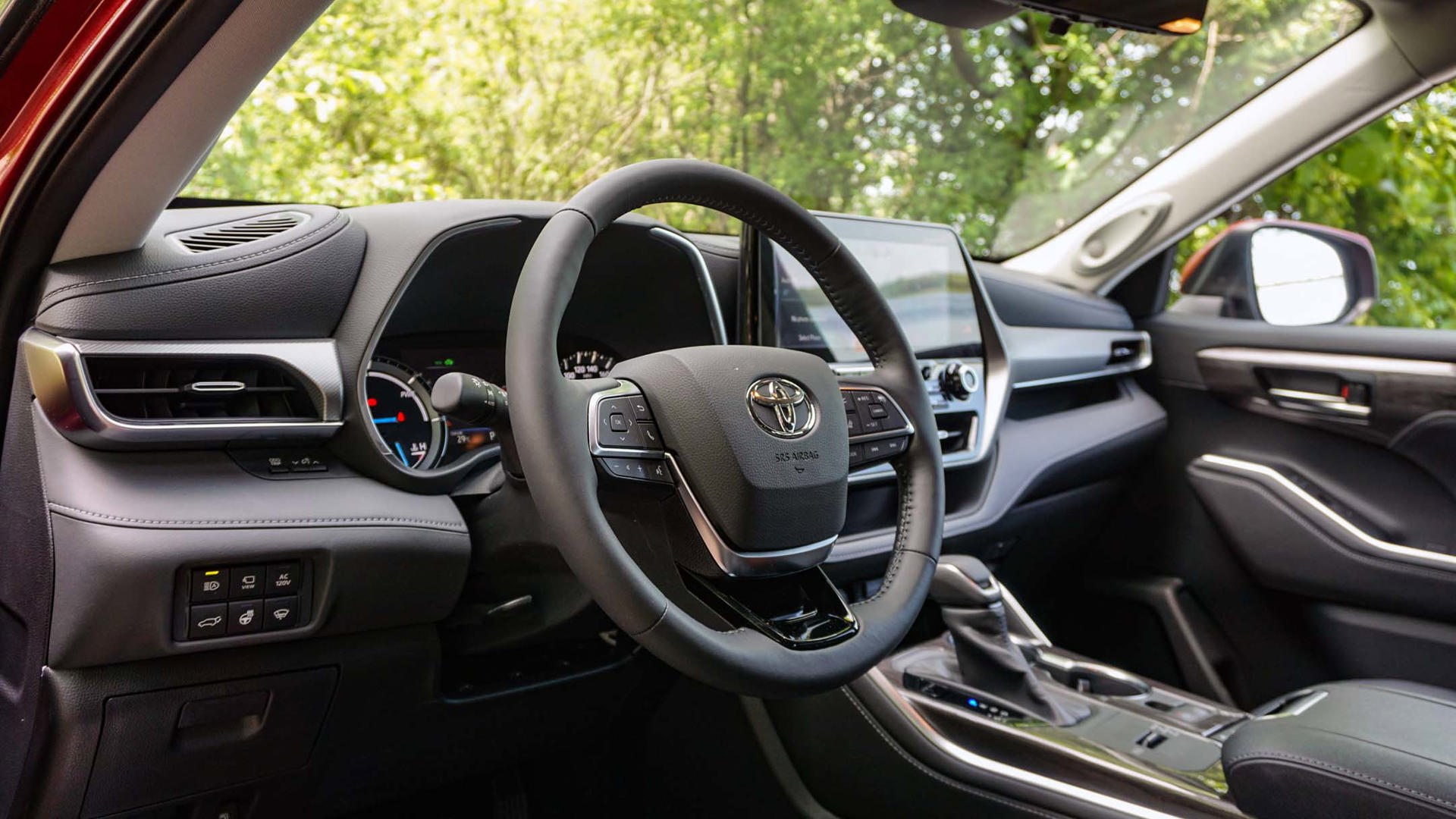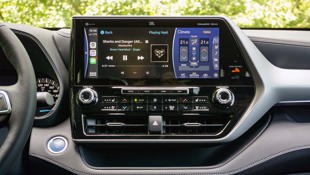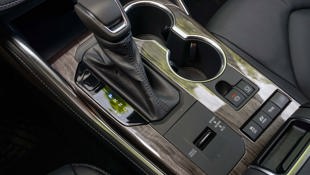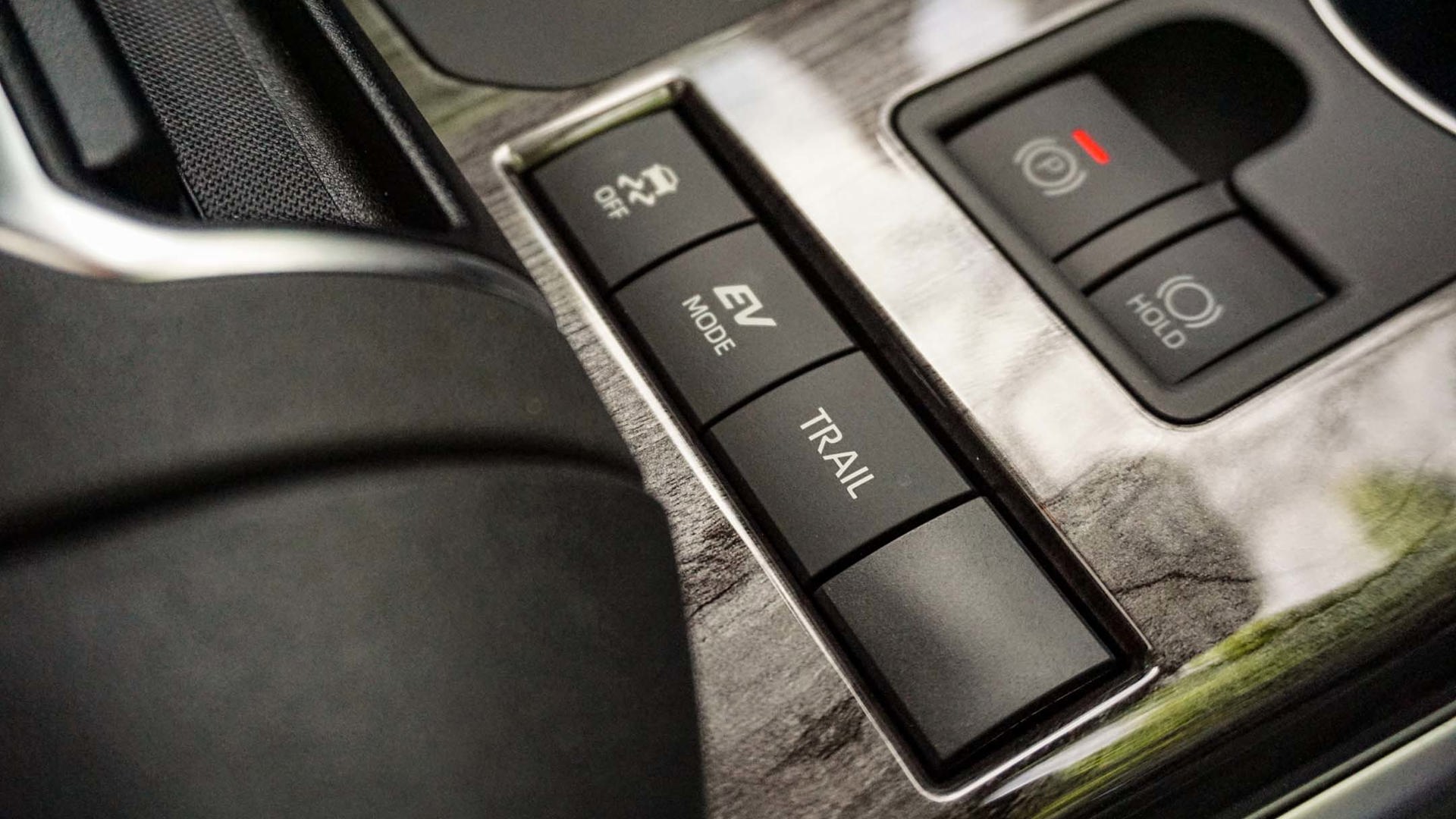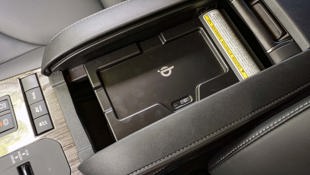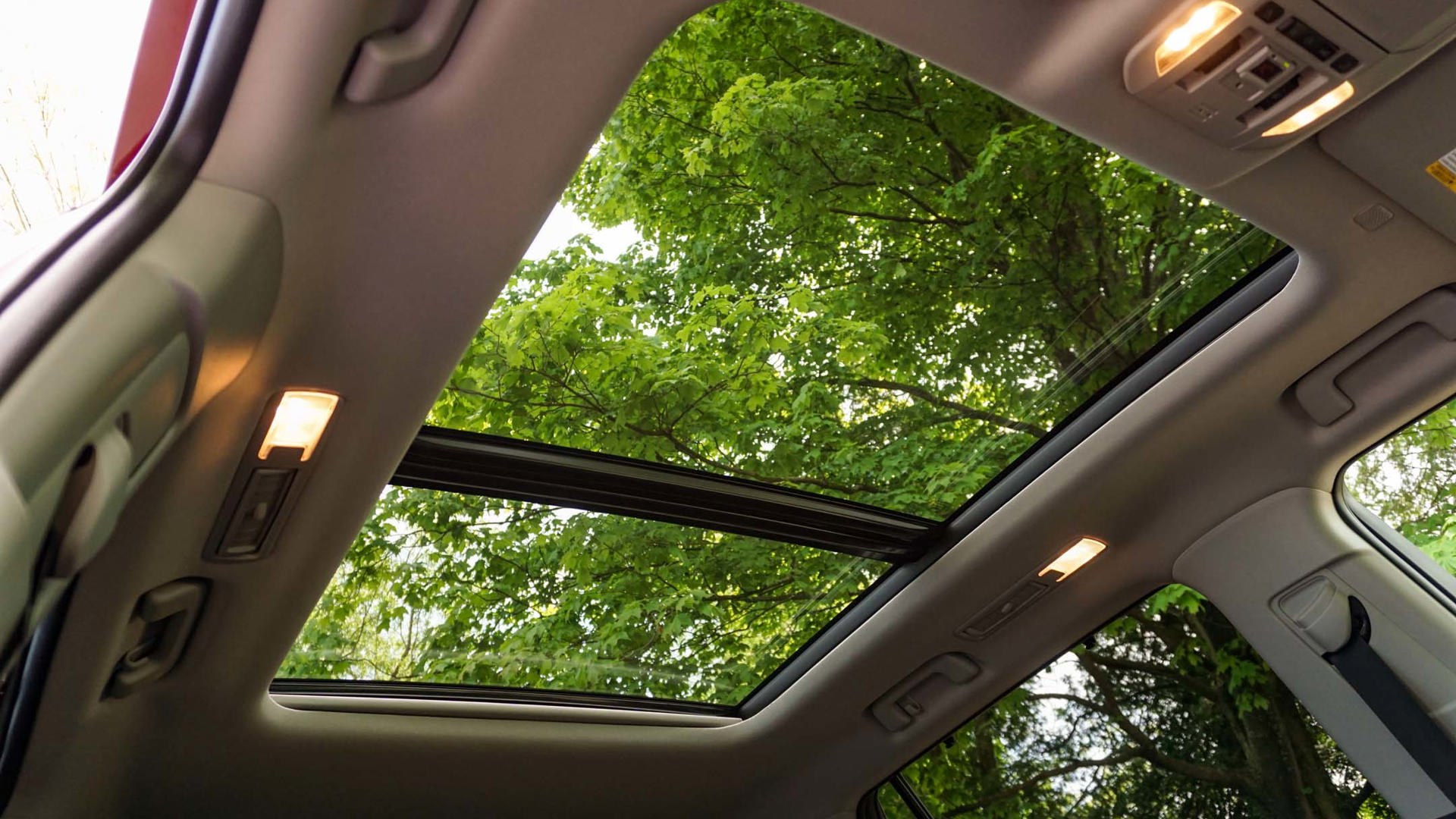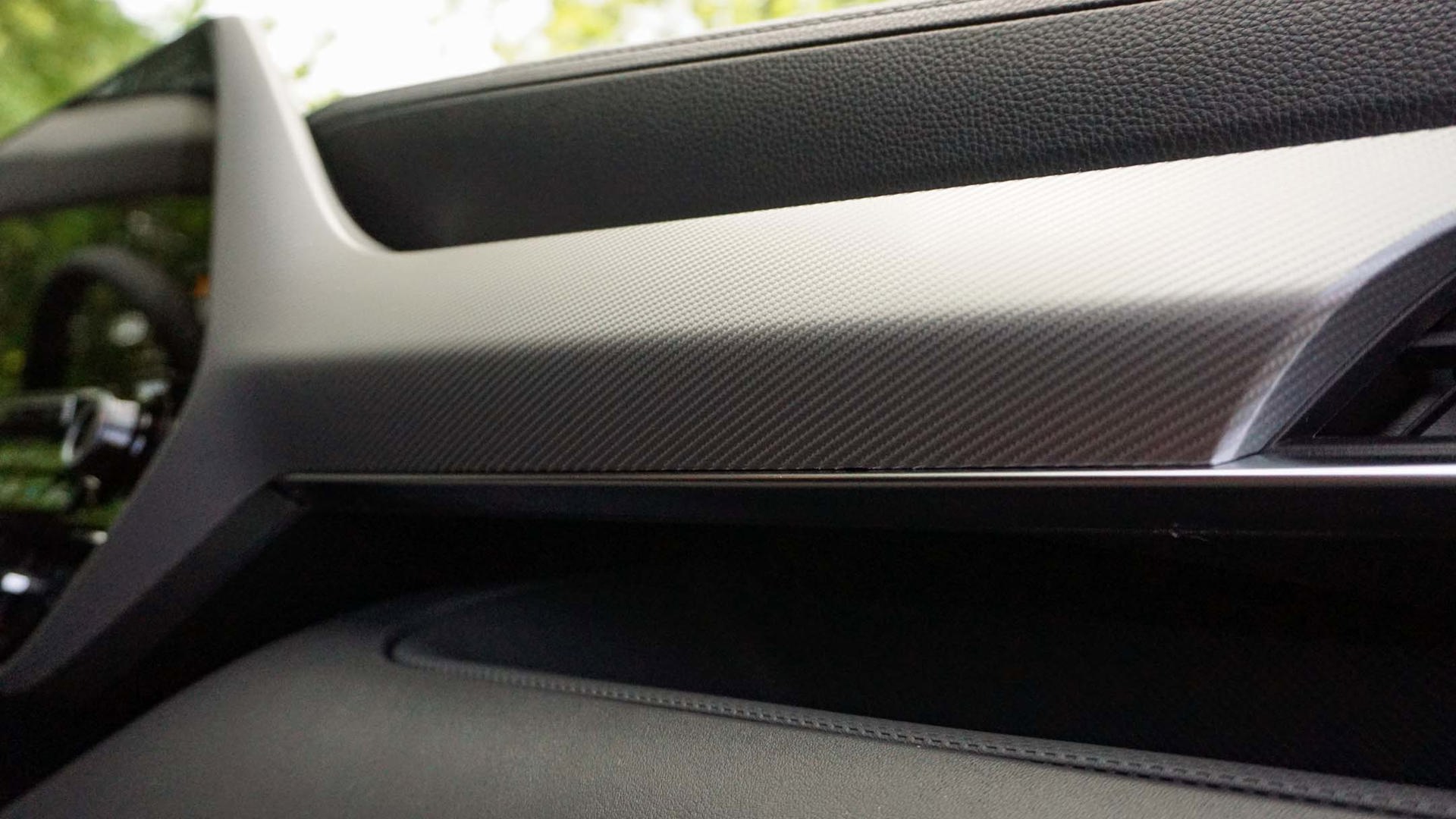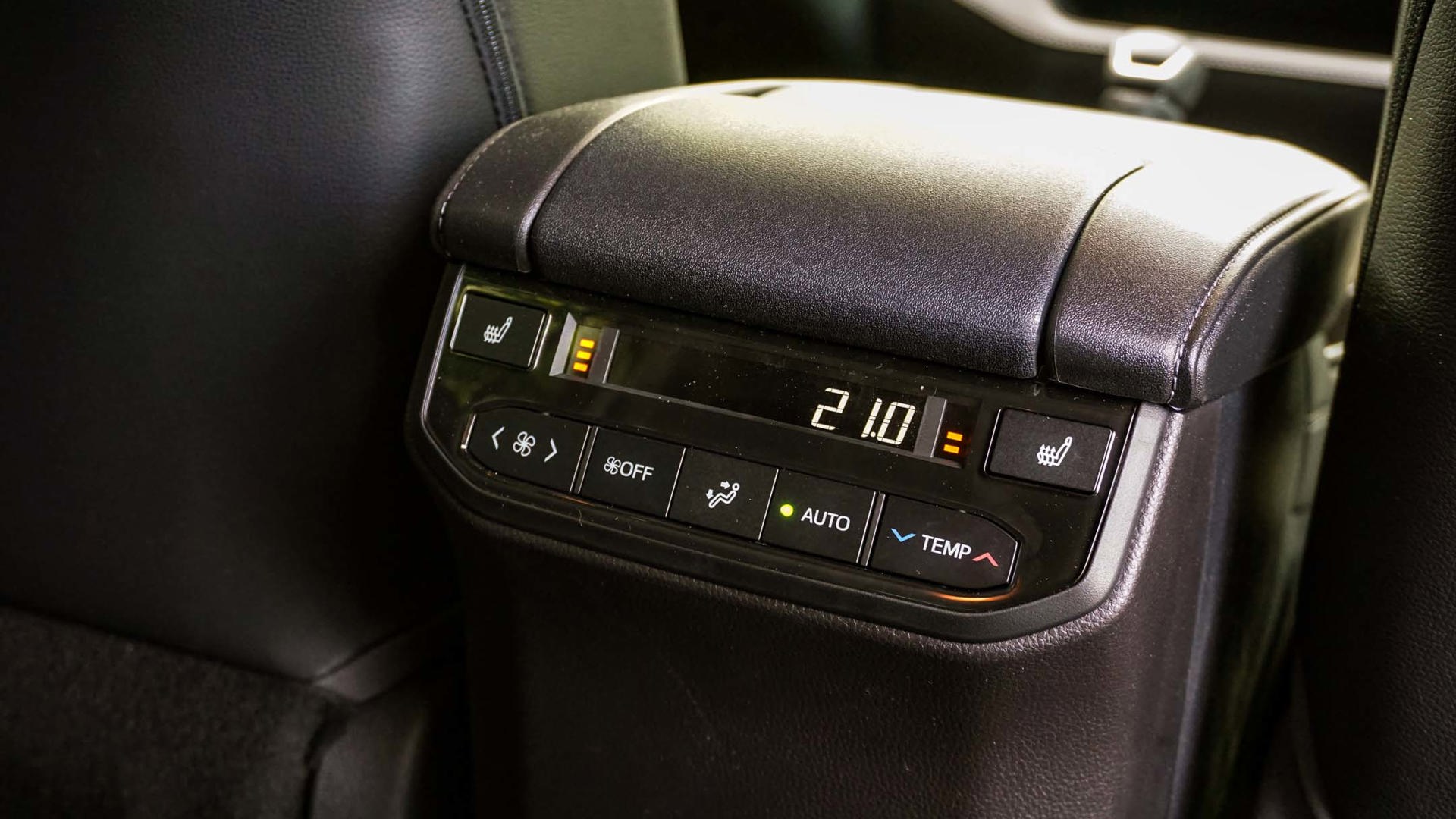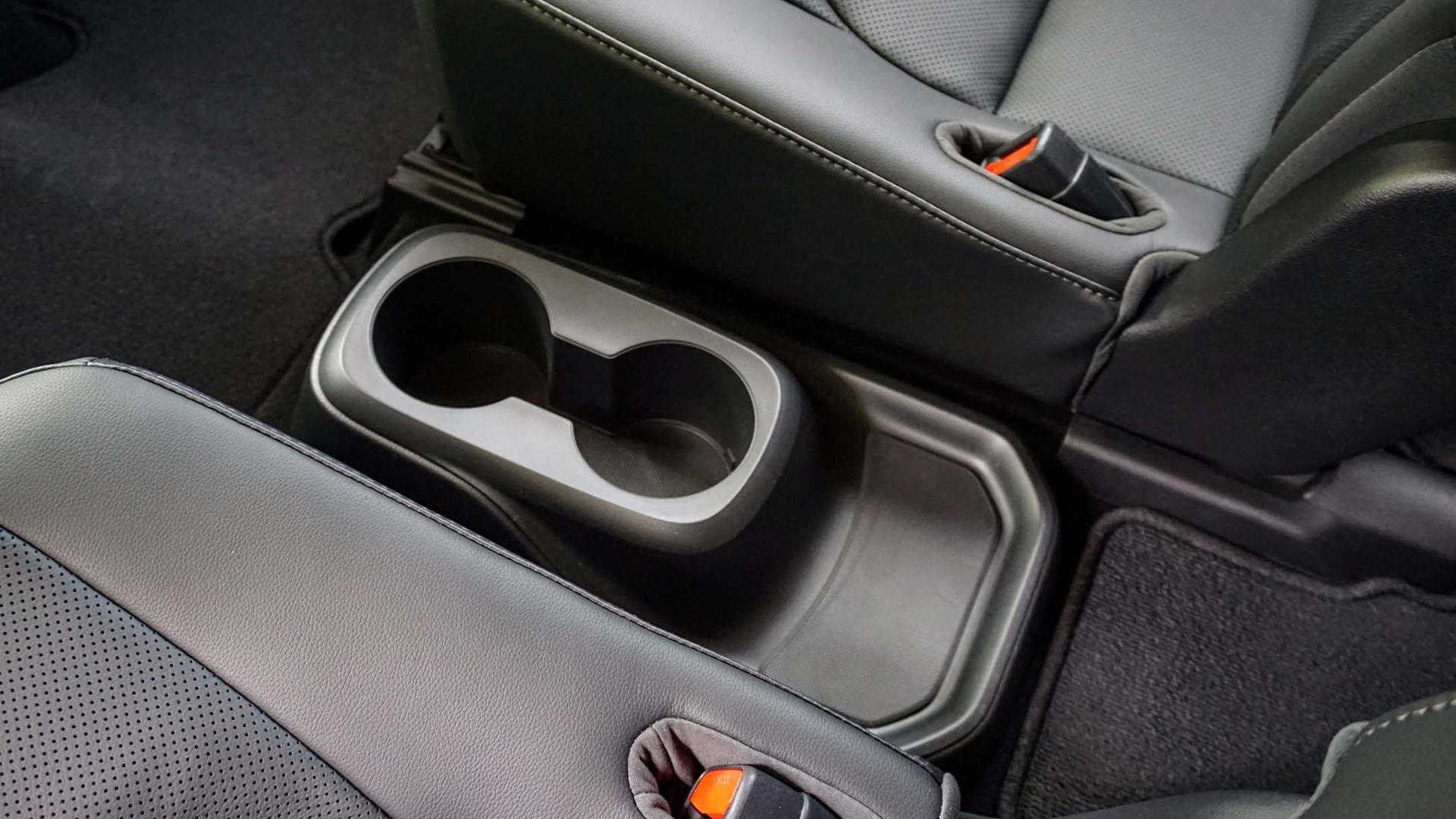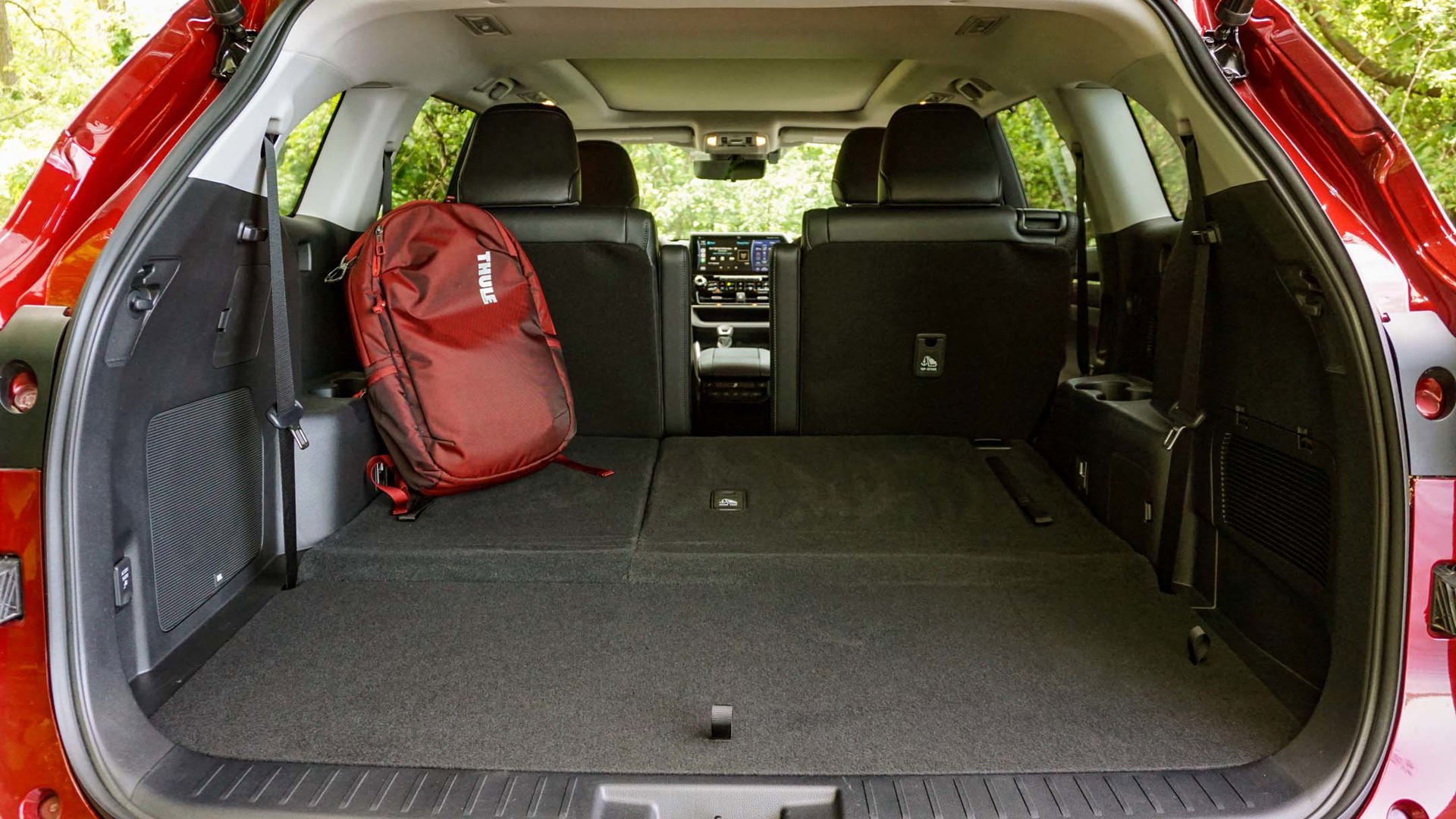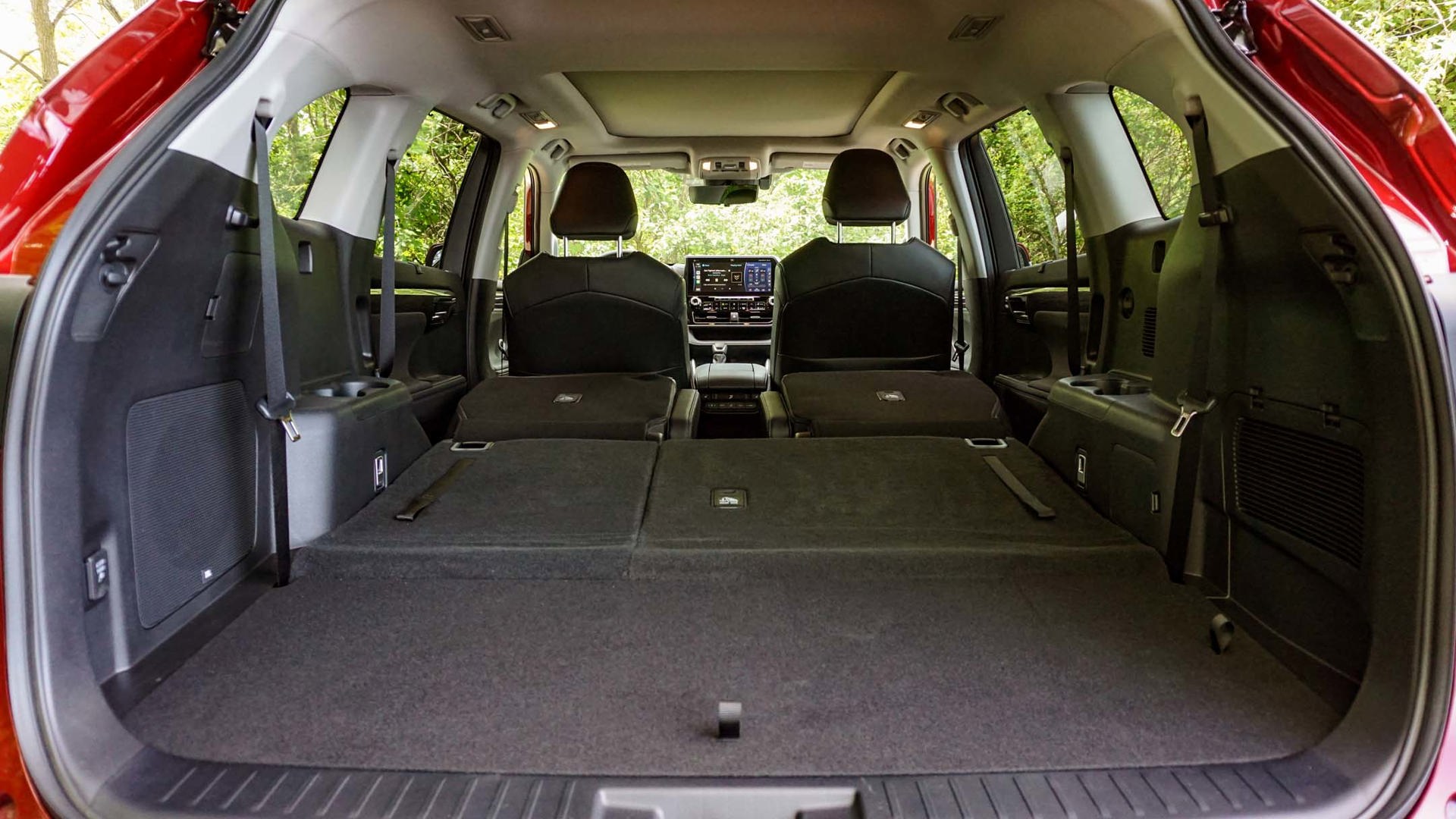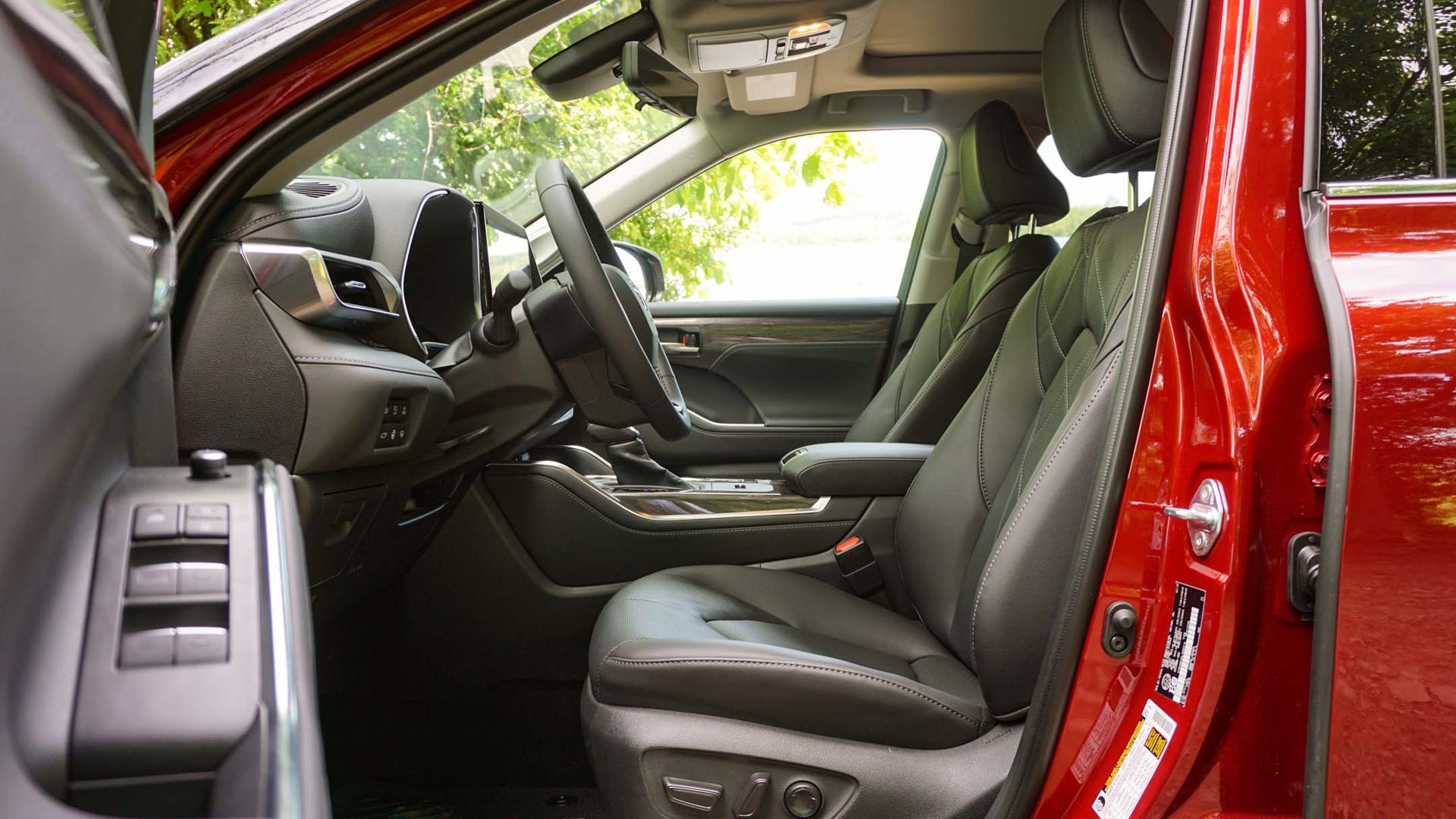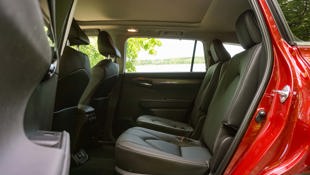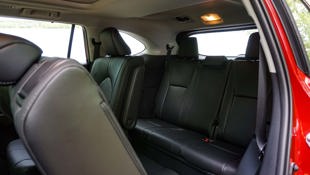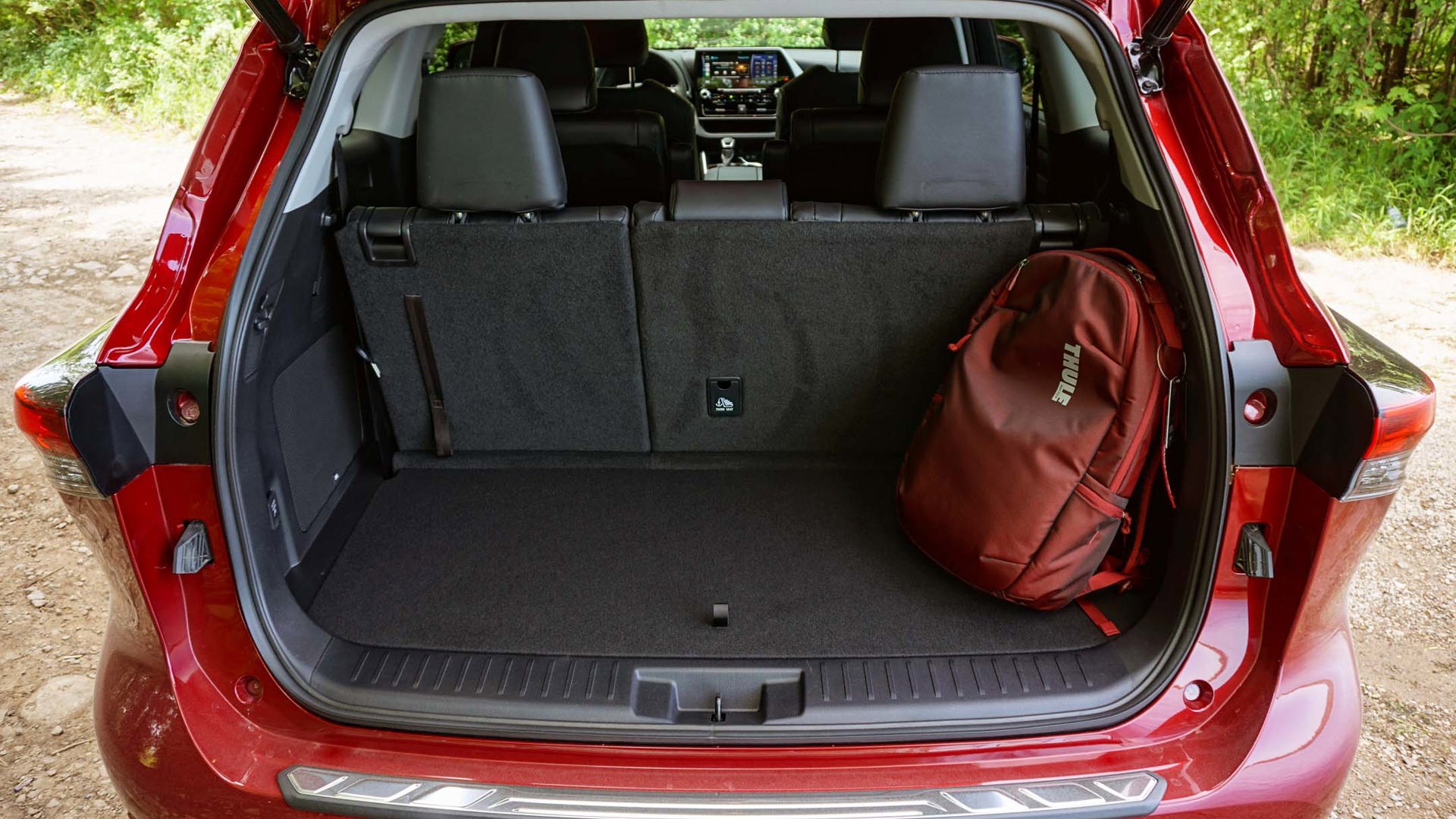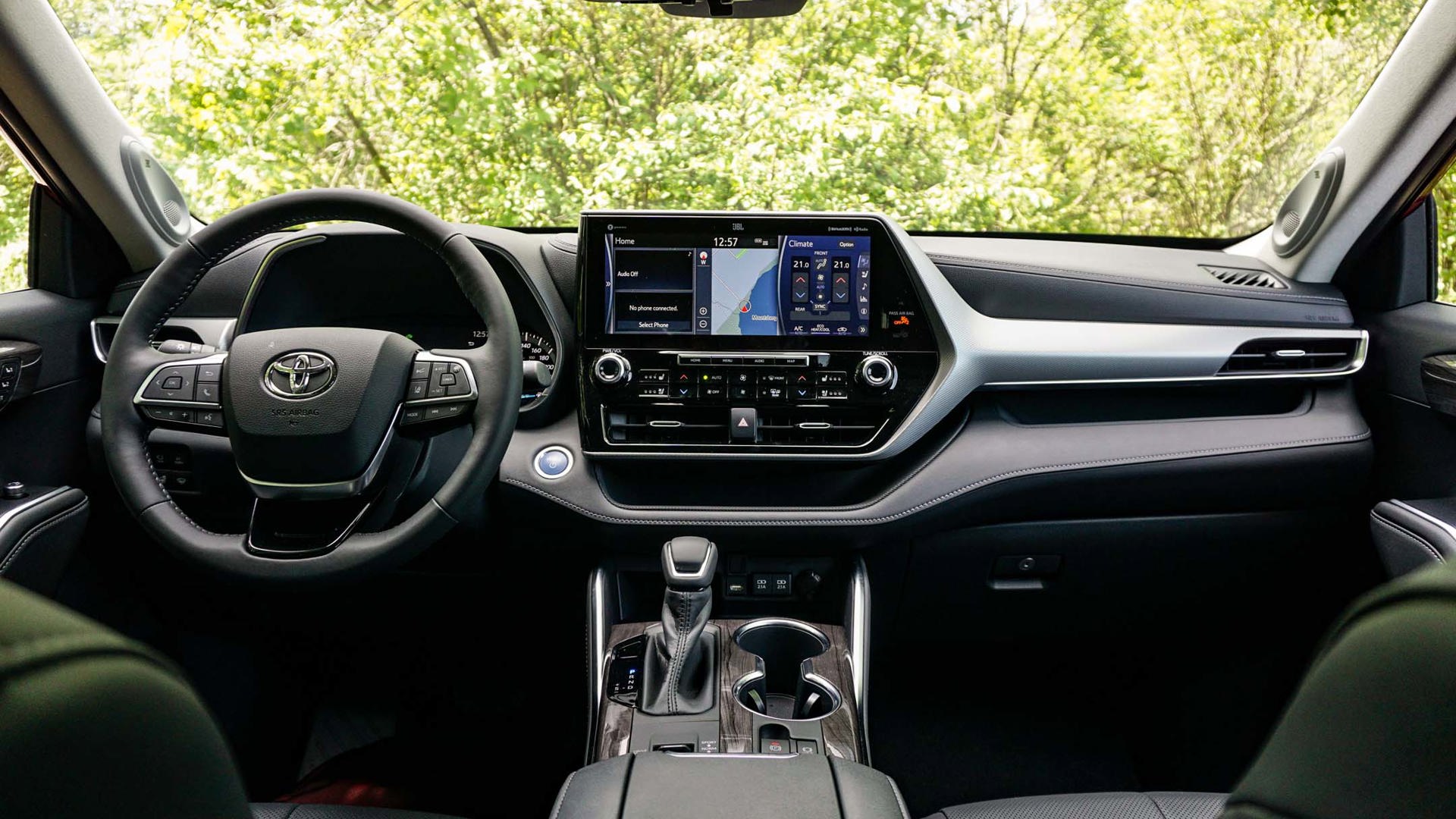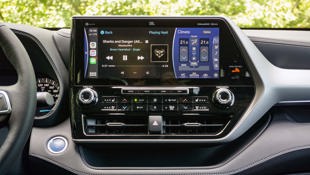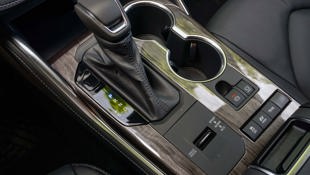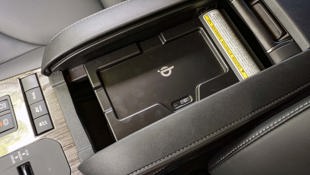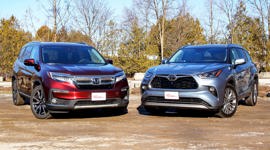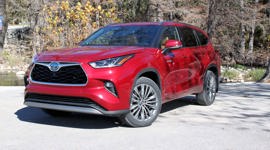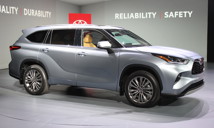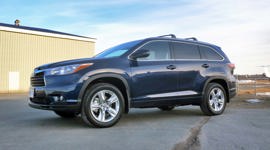 AutoTrader SCORE
AutoTrader SCORE
-
STYLING9/10
-
Safety10/10
-
PRACTICALITY9/10
-
USER-FRIENDLINESS9/10
-
FEATURES9/10
-
POWER8/10
-
COMFORT9/10
-
DRIVING FEEL8/10
-
FUEL ECONOMY10/10
-
VALUE9/10
You have to spend money to make money, as the old saying goes.
The 2020 Toyota Highlander Hybrid is proof the same goes for saving some cash, too, with the initial cost of adding electric power to the three-row family hauler nothing compared to how much it’ll put back into your wallet.
Value: 9/10
All it takes is $2,000 to transform the Highlander into a hybrid – money well spent for the fuel it saves alone. Compare that to conventionally powered rivals and that premium is more than reasonable, with all four gas-electric trims priced in lockstep with competitors like the Honda Pilot and Hyundai Palisade, among the ever-expanding segment of three-row SUVs. Considering all that’s included in the cheapest version – all-wheel drive, adaptive cruise control, and heated front seats, among others – its starting price of $45,490 has some serious appeal.
The loaded Platinum trim tested here inches up to $58,185 before tax – a hefty sum, but not an unreasonable one compared to gas-powered rivals. The most expensive Pilot model has a pre-tax price of $55,605, while the priciest Palisade tops out at $56,209 before tax. Then there’s the Ford Explorer, which rings in at a whopping $66,549 with freight and fees.
If that’s not enough, there’s the return on investment provided by the Highlander’s hybrid powertrain. According to Natural Resource Canada (NRCan) estimates, annual fuel costs for the hybrid come in at $1,742 – $936 less than the V6 version. That’s based on 20,000 km of driving with a mix of city and highway that’s skewed slightly towards the former. It’s safe to assume real-world results will vary, but either way, it won’t take long to amortize the upfront cost of the gas-electric powertrain. Based on those numbers, the additional cost of the hybrid will be made back in a little more than two years.
Fuel Economy: 10/10
When it comes to fuel consumption, it really doesn’t get much better than the Highlander Hybrid. According to NRCan, the gas-electric version is good for a combined 6.7 L/100 km. That’s better than the conventionally powered Toyota Corolla – and it’s not hard to surpass that ultra-low rating without much effort. A weeklong test covering 630 km of mostly highway driving resulted in a combined consumption of 6.4 L/100 km.
Power: 8/10
The hybrid powertrain pairs a 2.5L four-cylinder gas engine with a few electric motors – a pair of motor-generators under the hood, and one in the back that drives the rear wheels (and thus, um, closing the circuit on the all-wheel-drive system). The rear-mounted motor is engaged during acceleration and cornering, or when the front wheels start to slip; otherwise, the three-row SUV relies on what’s under the hood for motivation, remaining in front-wheel drive to reduce fuel consumption.
The gas engine is rated at 186 hp and 175 lb-ft of torque – not especially impressive on its own. Once the electric motors are added to the equation output rises to 243 net hp, which is a little more reasonable though it’s still less than what gas-powered rivals produce. The powertrain can at times feel ill-suited to move the Highlander’s mass, though it’s the continuously variable transmission (CVT) shuffling power to the front wheels that’s the culprit.
No one’s going to mistake it for the V6 version, though the Highlander Hybrid moves itself well enough most of the time. It is, however, rather buzzy above anything other than the most moderate throttle inputs, the gas engine and CVT droning loudly as the Highlander builds speed. It’s especially noticeable when merging on the highway, humming like an electric lawnmower on its way to cruising altitude. It quiets down significantly when it gets there, though, with the gas and electric motors working well together to keep it moving at a steady pace.
Driving Feel: 8/10
Since it’s not a plug-in hybrid there’s no all-electric driving range like there is in the smaller Mitsubishi Outlander PHEV, but there are plenty of times the gas engine shuts off so the Highlander Hybrid can cruise along on electrons alone. Whether accelerating gently or coasting to a stop, the hybrid system is constantly working to draw power from or put energy back into the battery pack that’s mounted beneath the second-row seats – all without driver intervention.
The brakes aren’t especially firm, which can lead to momentary panic when the hefty Highlander doesn’t feel at first like it wants to slow down – hybrid models tip the scale at more than 2,000 kg (4,409 lb) – but adequate stopping power is found deeper in the pedal, while simultaneously feeding energy into the battery for later use.
The chassis can at times feel a little stiff, but suspension damping is such that it soaks up most of what’s encountered during daily drives, with only the worst roads reverberating through the body. It’s also prone to the kind of body roll that’s expected in such a heavy vehicle. Electrical components like the battery pack and cooling equipment, as well as the rear-wheel electric motor, are stashed low in the vehicle, but with a 203-mm ride height, the centre of gravity doesn’t feel especially low.
That can lead to a propensity for the Highlander to pull toward the outside of corners at moderate speeds, though the three-row remains composed and controlled thanks to its superb steering setup. It’s responsive and there’s enough resistance at cruising speed that deliberate input is met with quick changes of direction, yet it’s featherlight at low speeds to make parking easier than the Highlander’s 4,950-mm length would suggest.
Practicality: 9/10
Its size is such that the fourth-generation Highlander is competitive within the class when it comes to moving people and their stuff. But more importantly, the gas-electric version isn’t penalized the same way other hybrids are when it’s time to haul cargo. Since the battery pack is mounted beneath the second-row seats, cargo room is the same as the conventionally powered model. With all three rows of seats upright, there’s 453 L – not particularly impressive, though pretty standard for an SUV of this size. Volume grows to 1,371 L with the third row folded into the floor, while folding the second-row seats flat yields 2,387 L of total volume.
There are a couple of trade-offs that come with the hybrid, however. Towing capacity drops to 1,588 kg (3,500 lb) from the V6 version’s 2,268 kg (5,000 lb), while second-row headroom suffers as a result of the battery pack’s positioning. There’s still adequate room for kids, though – especially with the Platinum trim’s captain’s chairs. Either way, the third row is comically difficult to climb into and feels a bit like a hobbit’s house, making it best reserved for infrequent use.
There also isn’t much storage for passengers in either rear row. Up front, the centre armrest bin is a bit narrow, but there are plenty of cubbies for personal items.
User Friendliness: 9/10
The cramped third-row isn’t the only issue with the Highlander’s hindquarters, as the way in which it tapers rearward compromises visibility out the back. Compared to big and boxy rivals like the Palisade and Kia Telluride, which utilize large rear and side windows, the Highlander’s sleek styling is something of a detriment. It hits back with an excellent forward view, however, with narrow A-pillars that are easy to look around, and good-sized door glass to see what’s happening on either side of the family-hauler.
It’s almost van-like in its ease of access, with no need to climb up and into the Highlander. Instead, a simple step will do the trick, while the height-adjustable driver’s seat is good for users of all shapes and sizes. Once behind the wheel, there’s not a function or feature that doesn’t fall within easy reach of the driver, with a full array of switches on the steering wheel and physical controls for the standard tri-zone automatic climate control system.
Then there’s the infotainment system, which is excellent – a word not commonly associated with Toyota’s head units. Running through a massive 12.3-inch touchscreen in the top-of-the-line Platinum trim, the system is crisp and responsive to inputs. It also works in a split-screen format, prioritizing functions like Apple CarPlay or Android Auto smartphone interfaces on two thirds of the screen while using the remaining third for climate control, audio, or hybrid power monitoring. The layout can also be swapped from side to side with a simple finger tap.
Comfort: 9/10
The cabin is plagued by a few quirks that impact the ability to settle inside, but none of them are enough to ward off potential buyers. The front door panels don’t offer much of anywhere to comfortably rest an arm, with the switch panel sitting just too low and the windowsill too high to make either all that usable. There’s also a bit of cheap-feeling plastic inside that betrays its price tag. Then there’s the plastic panel between the second-row captain’s chairs in the Platinum trim that place the cupholders impossibly low to the ground.
The front seats themselves are supportive, and they come with standard heating. (Ventilation is only offered in the Limited and Platinum trims, while genuine leather comes only in the latter.) Second-row seats are a little firm but cozy, and they’re heated in the loaded Platinum model; that’s also the only version that features captain’s chairs.
Features: 9/10
All the stuff that makes for a good family hauler is offered here, and a lot of it’s standard. The tri-zone automatic climate control that’s fitted in every hybrid is outstanding, and there’s a set of controls in the back. There are also four dedicated USB charging ports – two up front, two in the second row – and a fifth port to connect with the standard Apple CarPlay and Android Auto. There’s also a pair of 120V household outlets offered, and a couple of 12V ones, too.
There’s also a bevy of advanced safety features that are standard, including adaptive cruise control, lane-keep assist, blind-spot monitoring, and automatic emergency braking with pedestrian and cyclist detection. In fact, the only safety stuff that doesn’t come standard is the head-up display, digital rear-view mirror, and rain-sensing windshield wipers that come with the Platinum package.
Safety: 10/10
Toyota deserves high praise for including all that safety equipment in the entire Highlander Hybrid lineup. It’s part of the automaker’s commitment to roll out its advanced suite of safety features in its entire portfolio, and most of it works without much fuss. The only exception is the steering assist that’s built into the lane-keep system. It’s meant to act as a lane-centring function, but it ends up ping-ponging the SUV between lane markings.
The Insurance Institute for Highway Safety (IIHS) stiffened the criteria for its Top Safety Pick+ rating for 2020, with higher standards for headlight performance. That leaves the Highlander a short step below, earning a Top Safety Pick award instead thanks to good crash-test results and strong performance of its forward collision avoidance system.
Styling: 9/10
The Highlander was overhauled last year, and it has to go down as one of the most significant generational changes in recent memory. It doesn’t stand out like the Palisade, relying instead on understated looks that accentuate its length. The resemblance between the Highlander and the rest of the Toyota lineup is subtle, with the RAV4 looking rugged by contrast. Yet it’s not hard to see they’re related, with some of the same shapes found on both.
The Highlander’s sleek styling stands apart from brooding three-row SUVs like the Telluride and Volkswagen Atlas, and it’s better for it. Graciously, it isn’t slathered in garish brightwork either; not even the priciest trim goes overboard with fake chrome, settling instead for bits of brushed aluminum on the grille and wheels to go with a couple of hybrid badges.
The Verdict
It’s hard to imagine a scenario where it’s even worth considering a Highlander model without the hybrid powertrain. It’s not that there’s anything wrong with the V6 version, but the hybrid has so much in its favour. There are plenty of great three-row SUVs on the market, but the Toyota Highlander Hybrid is as good or better than any of them. Granted, it’s loud when the gas engine kicks in, but that’s a small price to pay for compact-car efficiency in an SUV that doesn’t feel any different to drive than a conventional one. That Toyota made it such an inexpensive upgrade makes it all but a no-brainer.
| Engine Displacement | 2.5L Hybrid |
|---|---|
| Engine Cylinders | I4 |
| Peak Horsepower | 243 hp (net) |
| Peak Torque | n/a |
| Fuel Economy | 6.6 / 6.8 / 6.7 L/100 km cty/hwy/cmb |
| Cargo Space | 453 / 1,371 / 2,387 L behind 3rd/2nd/1st row |
| Model Tested | 2020 Toyota Highlander Hybrid Platinum |
| Base Price | $55,990 |
| A/C Tax | $100 |
| Destination Fee | $1,840 |
| Price as Tested | $58,185 |
|
Optional Equipment
$255 – Ruby Flare Pearl Paint, $255
|
|
